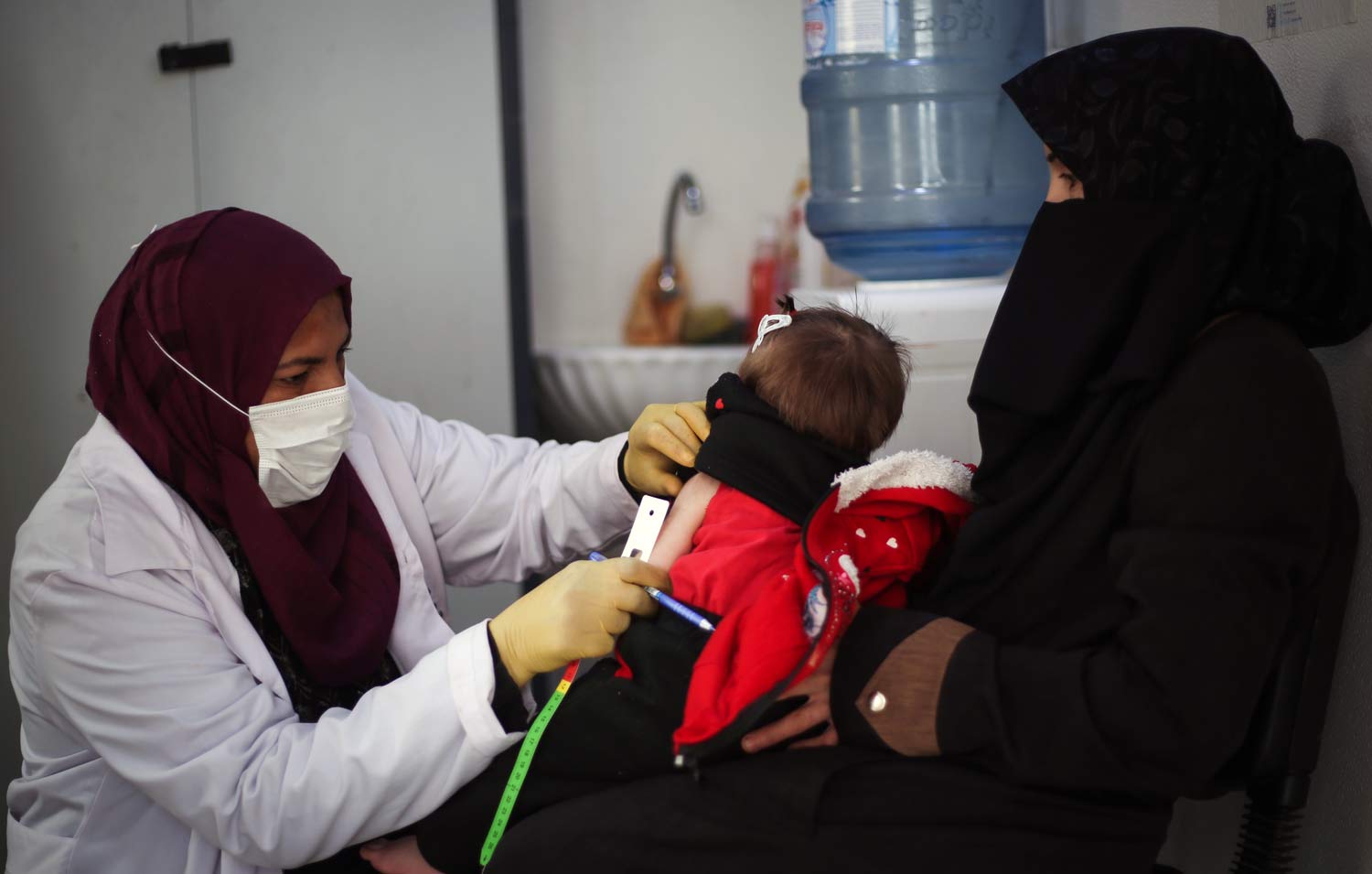Malnutrition Early in Life Sets Stage for Poor Growth and Death
Better nutrition during pregnancy and childbearing years is critical to protect children in their most vulnerable first 1,000 days, study finds.

Malnutrition affects babies much earlier than thought, and more nutritional support is needed for mothers-to-be and their newborns to prevent disease, impaired cognition and death, according to new findings by researchers at UC San Francisco and UC Berkeley.
In a trio of papers appearing in Nature on Sept. 13, 2023, the researchers offer the most comprehensive look yet at how malnutrition affects growth in the first two years of life, underscoring a devastating reality for millions of children in the Global South, particularly Asia.
In 2022, more than 1 in 5 children around the world – nearly 150 million – did not get enough calories to grow normally, and more than 45 million showed signs of wasting, or weighing too little for their height. More than a million children die each year as a consequence of wasting and more than 250,000 die from stunting. People who experienced stunting and wasting in childhood may also experience worse cognitive development, which translates into worse economic outcomes as adults.
Stunting, or being too short for their age, indicates chronic malnutrition, while wasting measures acute malnutrition. The global health community uses both indications to monitor progress toward ending malnutrition.
“Children whose growth begins to falter before they are six months old are much more likely to die and much more likely to have severe forms of growth faltering by the time they’re 18 to 24 months old,” said the papers’ senior author, Benjamin Arnold, PhD, MPH, associate professor at UCSF’s Francis I. Proctor Foundation. “This suggests there is a very narrow period in which we can intervene, ideally in the prenatal period. It also suggests broader interventions are needed to improve nutrition among women of childbearing age.”
Arnold, an infectious disease epidemiologist and biostatistician, helped lead the research while at UC Berkeley, in conjunction with the Center for Targeted Machine Learning and Causal Inference (CTML).
Season of birth makes a difference
The analysis involved an international team of more than 100 researchers led by UC Berkeley that examined data on nearly 84,000 children under two years old from 33 major studies that began between 1987 and 2014. The cohorts came from 15 countries in South Asia, Sub-Saharan Africa, Latin America and Eastern Europe.
By virtue of when a child happens to be born, they could be set off on a completely different trajectory in terms of growth.”
The effects of malnutrition are seen throughout lower resource settings, but the burden is starkest in South Asia where 20% of children were stunted at birth and more than 52% had experienced wasting by their second birthday, according to new estimates provided by the study.
The researchers observed large seasonal changes in wasting that coincided with rainfall; likely reflecting seasonal food insecurity in places where people rely on crops as their main source of nutrition.
In the South Asian cohorts, a child born in May was far more likely to be wasted than a child born in January, due primarily to seasonal food availability and the nutritional status of the mother during pregnancy.
“By virtue of when a child happens to be born, they could be set off on a completely different trajectory in terms of growth,” Arnold said, but he noted that no known health interventions have been able to correct the levels of seasonal deficits uncovered in this analysis.
Earlier intervention is key
While some children can catch up with improvements to their health and nutrition, the earlier onset of growth faltering revealed in this research suggests that public health interventions should expand their focus to include children under 6 months old and those who are pregnant.
Currently, most childhood nutritional interventions begin after about 6 months of age because they often include nutritional supplementation, and public health programs don’t want to interfere with breastfeeding.
“Our findings suggest that if health interventions are not delivered before age 6 months, it is too late to prevent stunted growth for about a third of children in the populations represented in this study and as many as half of children in South Asia,” said Jade Benjamin-Chung, PhD, MPH, first author of a paper in the series and assistant professor at Stanford University. Benjamin-Chung helped lead the research as part of the division of epidemiology and biostatistics while she was at UC Berkeley.
The papers also highlight the need to provide nutritional and health support to those who are pregnant before conception and to continue that support during and after pregnancy. In the studies, the researchers observed that a malnourished mother is likely to give birth to a child who will repeat that cycle of malnutrition into the next generation.
“Early life malnutrition sets a concerning course that can span generations,” said Andrew Mertens, PhD, a research data analyst at CTML and lecturer at UC Berkeley and one of the papers’ first authors. “Immediate interventions are essential, but we also need sustained investments in development and in public health and nutrition programs to break this cycle. Support during the first 1,000 days of life matters immensely for the individual and for society as a whole.”
Authors: Additional co-authors from UC Berkeley include Jack Colford, Alan Hubbard, Mark van der Laan, Jeremy Coyle, Oleg Sofrygin, Wilson Cai, Anna Nguyen, Nolan Pokpongkiat, Stephanie Djajadi, Anmol Seth, Wendy Jilek, Esther Jung, Esther Chung, Sonali Rosete, Nima Hejazi, Ivana Malenica and Haodong Li.
Funding and Disclosures: The research was funded through a global development grant (OPP1165144) from the Bill & Melinda Gates Foundation to UC Berkeley and an award (K01AI141616) from the National Institute of Allergy and Infectious Diseases.